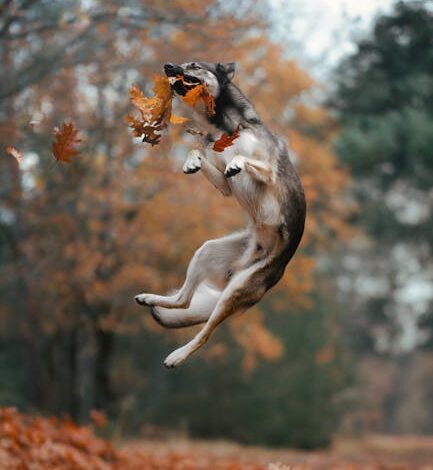Beyond Cotton: Why Your Running Socks Matter More Than You Think

Every dedicated runner knows the meticulous effort that goes into choosing the right shoes, dialing in a training plan, or even picking the perfect playlist. Yet, there’s an unsung hero of the running world, often relegated to an afterthought, that can make or break your miles: the running sock. We’re talking about more than just a piece of fabric; we’re talking about a crucial piece of performance gear designed to protect your feet, enhance comfort, and even boost your recovery.
Think about it: Your feet are taking thousands of impacts with every run. Sweat, friction, and varying terrains are all conspiring against them. A poorly chosen sock can lead to painful blisters, persistent chafing, and general discomfort that saps your motivation faster than a sudden downpour. But the right pair? They become an extension of your foot, a protective barrier that lets you focus purely on the rhythm of your stride and the joy of the run. As we look ahead to 2025, the innovation in running socks continues to impress, offering tailored solutions for every kind of runner and every type of run.
Beyond Cotton: Why Your Running Socks Matter More Than You Think
For years, many of us just grabbed a pair of cotton socks from the drawer and headed out. But if you’ve ever experienced the squishy discomfort of wet cotton, the hot spots that turn into blisters, or the general breakdown of the fabric after just a few runs, you know why cotton is a no-go for serious mileage. Cotton, while soft and breathable in casual wear, absorbs moisture like a sponge and holds it against your skin, creating a perfect storm for friction and bacterial growth.
Modern running socks are engineered with sophisticated materials and designs. They’re built not just to cover your feet, but to actively manage moisture, provide targeted cushioning, and even improve blood flow. These aren’t just socks; they’re an essential component of your running ecosystem, a critical layer that works in concert with your shoes to keep your feet happy, healthy, and ready for whatever distance you’re chasing. From long-lasting everyday staples to toe-friendly blister busters, the options today are truly transformative.
The Contenders: Compression, Merino Wool, and Toe Socks Explained
When searching for the best running socks, you’ll inevitably encounter a few specialized categories that promise to elevate your experience. Each offers unique benefits, making them suitable for different types of runs, conditions, and personal preferences. Let’s break down the main players you should consider for 2025.
The Power of Compression Running Socks
Compression socks aren’t just for marathoners or those recovering from injury anymore; they’ve become a staple for many runners seeking an edge in performance and recovery. These socks are designed to apply graduated pressure, meaning the compression is strongest at the ankle and gradually lessens up the leg. This targeted pressure isn’t just a gimmick; it genuinely aids in blood circulation.
Improved circulation means more oxygen-rich blood reaching your muscles and more metabolic waste products being flushed away. For runners, this translates to reduced muscle fatigue during long runs, diminished soreness afterwards, and potentially faster recovery times. I’ve personally found them invaluable on those longer training days or when I know I’ll be on my feet for hours after a hard workout. While full calf sleeves are popular, even ankle-height compression socks can provide significant benefits for your feet and lower calves, stabilizing muscles and reducing vibrations. Fit is paramount here; too tight, and they’ll be uncomfortable; too loose, and you lose the benefits.
Merino Wool Running Socks: Nature’s Performance Fabric
If the idea of wool socks conjures images of itchy, bulky hiking gear, think again. Merino wool is a game-changer. Sourced from Merino sheep, this natural fiber is incredibly fine, soft, and surprisingly lightweight. It offers a unique blend of benefits that synthetic materials often struggle to match.
Firstly, merino wool excels at temperature regulation. It keeps your feet warm in colder conditions without overheating them in warmer weather – a truly impressive feat of natural engineering. Secondly, it’s a phenomenal moisture-wicker, moving sweat away from your skin to the outside of the fabric where it can evaporate, keeping your feet dry and reducing friction. Perhaps its most lauded quality for runners, however, is its natural odor resistance. Unlike synthetics that can start to smell after a single run, merino wool fibers naturally resist bacterial growth, meaning your socks stay fresher for longer. This makes them ideal for multi-day adventures, trail runs, or simply for those who prefer a more natural feel. My first pair of merino running socks was a revelation; I was genuinely surprised by their softness and how well they performed across seasons.
Toe Socks for Running: The Ultimate Blister Buster
For many runners, especially those who tackle ultra-distances or have unique foot anatomies, blisters between the toes are a persistent nightmare. This is where toe socks step in as a true hero. Designed with individual sleeves for each toe, they might look a little unconventional, but their function is pure genius.
The primary benefit of toe socks is simple: they eliminate skin-on-skin friction between your toes, which is a leading cause of those painful inter-toe blisters. By wrapping each toe individually, they also allow for better moisture management between the digits, preventing the soggy environment where blisters thrive. Some runners also report a more natural, articulate feel for their feet, enhancing proprioception and overall comfort. While they can take a moment longer to put on, the relief from constant toe-rubbing is a small price to pay for blister-free miles. If you’ve struggled with toe blisters, trying a pair of quality toe socks could be the single best investment you make in your running comfort.
Beyond the Material: Other Key Factors in Choosing Your Best Running Socks
While material and specialized design are crucial, there are other important considerations that contribute to finding your perfect pair of running socks.
Fit and Sizing: The Foundation of Comfort
This cannot be stressed enough: the right fit is paramount. A sock that’s too large will bunch up, creating wrinkles that rub and lead to blisters. One that’s too small will pull and stretch, thin out cushioning, and restrict blood flow. Your running socks should fit snugly, like a second skin, without being overly tight or restrictive. Pay attention to specific sizing charts from brands, as they can vary. A well-fitting sock stays put, eliminating hot spots before they even begin.
Cushioning Where You Need It
Running socks come in various levels of cushioning, from ultra-thin “barely there” styles to plush, heavily padded options. The “best” level depends entirely on your preference, the type of run, and even your shoes. Minimalist runners might prefer less cushioning for better ground feel, while those tackling long distances or needing extra impact absorption might opt for more padding in key areas like the heel and forefoot. Some socks even offer targeted cushioning in the arch or Achilles tendon area, providing extra support and protection.
Sock Height and Personal Preference
The height of your running sock is largely a matter of personal preference and sometimes, the weather or trail conditions. No-show socks offer a minimalist look, while ankle-height options provide a bit more protection against debris without feeling too bulky. Crew-height socks are excellent for trail running, offering protection against scrapes, ticks, and sun, and are also a popular choice for compression benefits. Experiment with different heights to see what feels most comfortable and functional for your runs.
Durability and Longevity
A good pair of running socks is an investment, and you want them to last. Look for socks with reinforced heels and toes, as these are typically the areas that experience the most wear and tear. High-quality materials and construction will ensure your socks stand up to countless miles and washes, providing consistent performance over their lifespan. Brands known for their running gear often focus on these details, ensuring their socks are built to endure.
The Final Stride: Investing in Your Running Comfort
It’s easy to dismiss socks as just socks, but for runners, they are a vital piece of equipment. Taking the time to select the right pair – considering materials like merino wool, specialized designs like compression or toe socks, and crucial factors like fit and cushioning – can profoundly impact your comfort, performance, and overall enjoyment of the sport. Don’t let blisters or discomfort be the reason you cut a run short or dread your next session. Invest in your feet, experiment with different styles, and discover how the right running socks can truly elevate every step of your journey. Happy running!





